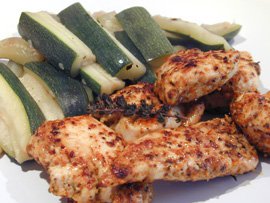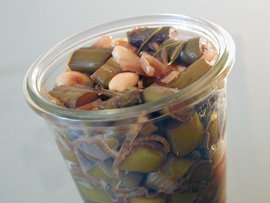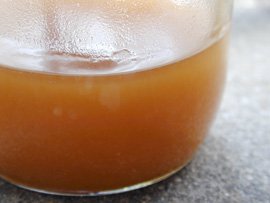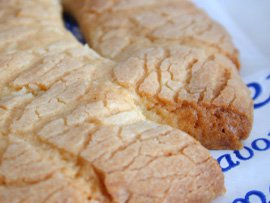
We all need easy and healthy meals that can be whipped up in very little time (and even less planning) for a week-end lunch or a weeknight dinner, without sacrificing taste or feeling like you’re slapping ready-made stuff together. So I thought I’d share the very very simple lunch we had last Saturday.
I’m sure you’ve noticed how the way you cut your vegetables affects their taste, giving them different textures and causing them to cook in different ways depending on the surface that’s exposed to the heatsource. Zucchini is a good example because it lends itself to myriads of possible shapes that I like to play with: half-moons, dice, thick slices, super-thin slices, teeny matchsticks, tagliatelle or papardelle-like ribbons, or today’s little sticks.
As for chicken breasts (blancs de poulet in French, literally chicken whites), I hardly ever buy them because they are so ubiquitous and boring and it feels so easy to overcook and ruin them — thus reproducing one of the most famous dishes in the history of cinema, “Shoe Sole à la Chaplin”. But I made an exception the other day at the (gasp!) grocery store, buying two organic chicken breasts that actually managed to look engaging through the plastic shrink wrap.
What I did with them was exceedingly simple: I just rubbed them with the Bed of Roses spice mix I mentioned before, headily full-flavored and slightly spicy, throwing in a few extra red pepper flakes because I like spicy. Of course, this would work beautifully with other spice rubs and mixes too, including tandoori and curry. The meat was left in the fridge for the chicken to absorb the flavors while I worked on my zucchini sticks.
Exceedingly simple, yet something I had never really realized was that easy, or that good: these little chicken un-nuggets were delightfully moist — I kept as close an eye on them as I could without burning my retina — and the spice coating formed a thin aromatic crust, making the whole thing look mouth-watering and taste delicious.







